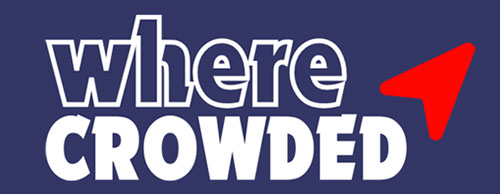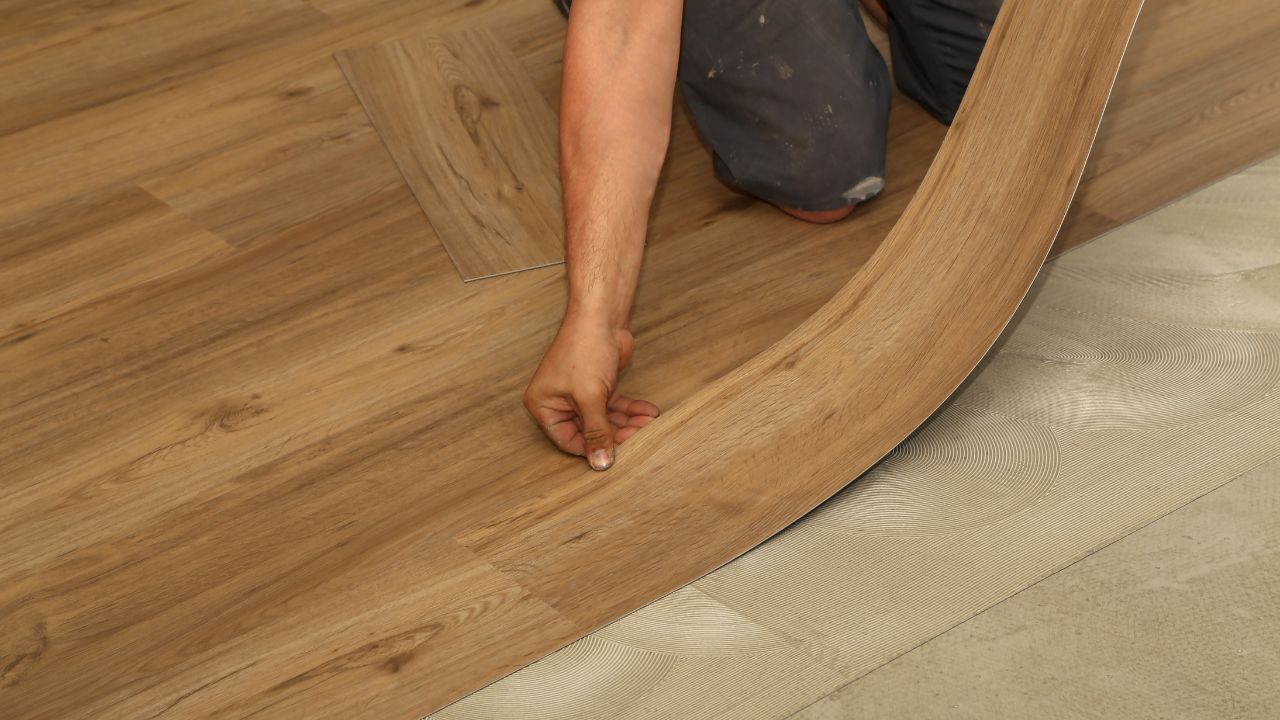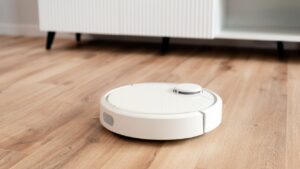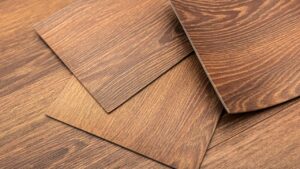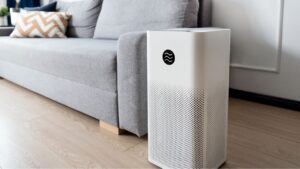Vinyl flooring is a fantastic choice for Singaporean homes. It’s stylish, durable, and stands up well to our humid weather. But like any floor, it needs a bit of love to keep it looking its best. With the daily hustle and bustle, dust, and humidity, what’s the most effective way to keep your vinyl floors clean and pristine?
1)Your Basic Cleaning Toolkit
You don’t need fancy equipment. Most of these items are probably already in your home:
- A soft-bristle broom or a vacuum cleaner
- A microfibre mop or a spin mop
- Two buckets
- A gentle, pH-neutral floor cleaner
- Water
The Importance Of Using The Right Floor Cleaner For Vinyl Floors
Choosing the right cleaning solution is just as important as using the correct technique. The wrong cleaner can inflict permanent damage on your vinyl floors, stripping their protective layer.
The Power of pH-Neutral: Vinyl flooring is manufactured with a tough, transparent protective top layer, typically made of polyurethane, known as the “wear layer”. This layer is what shields the printed design from scratches, stains, and fading. The integrity of this layer is paramount.
Cleaners that are too acidic (low pH) or too alkaline (high pH) can chemically attack and break down this protective coating.
This damage manifests as dullness, discoloration, and an increased susceptibility to future stains and scratches.
A pH-neutral cleaner, which has a pH level of approximately 7, cleans effectively without being chemically aggressive, making it the universally recommended standard for vinyl care.
When shopping, look for products explicitly labelled as “pH-neutral,” “safe for vinyl,” “no-rinse,” or “residue-free”. For example, Magiclean Floor Cleaner is widely available and suitable for vinyl.
2) The Simple Weekly Cleaning Routine
For most homes, a quick clean once or twice a week is all you need to keep your vinyl floors in top shape.
Step 1: Get Rid of Loose Debris
First things first, clear the surface. Use a broom or a vacuum cleaner to pick up dust, hair, crumbs, and other loose dirt. This prevents you from just pushing grime around when you mop.
- Broom or Dust Mop: Use a broom with soft bristles or a microfiber dust mop to gather surface debris. These tools are gentle on the vinyl’s finish and effective at trapping fine particles.
- Vacuuming Correctly: If using a vacuum cleaner, it is imperative to use a hard floor setting or attachment. Crucially, the beater bar, the rotating brush designed to agitate carpet fibres, must be turned off. A spinning beater bar can aggressively strike the vinyl surface, causing scratches, scuffs, and sometimes permanent damage.
Step 2: Mix Your Cleaning Solution
This is the most important step! Vinyl is resilient, but harsh chemicals are its enemy.
- Fill one bucket with cool or lukewarm water.
- In the second bucket, mix a small amount of pH-neutral floor cleaner with water. Follow the instructions on the bottle – a little goes a long way!
- Pro Tip: In a pinch? A simple solution of water with a few drops of mild dish soap works wonders. Avoid using vinegar, as its acidity can dull the finish of your vinyl floor over time.
Step 3: Mop The Right Way
A weekly mop is necessary to eliminate the grime, sticky residues, and build-up that adhere to the floor’s surface.
- Dip your mop into the cleaning solution and wring it out thoroughly. Your mop should be damp, not soaking wet. Excess water can seep into the seams of the vinyl planks and cause damage.
- Rinse the mop frequently in the bucket of clean water to avoid spreading dirt around.
The most important principle for mopping vinyl is the “damp, not wet” rule. Excess water is one of the biggest threats to the longevity of vinyl flooring. The mop should be wrung out thoroughly until it is only slightly damp to the touch and does not drip when lifted.
Especially In Singapore’s high-humidity climate, the evaporation rate is significantly slower. This creates a prolonged window during which standing water can seep into the seams between vinyl planks or tiles.
Once trapped underneath, especially in “floating” click-lock floor systems, this moisture can weaken adhesives, foster the growth of mould and mildew in the dark, damp space, and cause the vinyl to warp, bubble, or lift at the edges.
- Choose the Right Tool: A microfiber mop is the ideal choice. Its fibres are designed to grip and lift dirt effectively while holding significantly less water than traditional cotton mops. For Singaporean homes, a spin mop is an excellent investment, as its mechanism is highly efficient at wringing out excess water, ensuring a perfectly damp mop head every time.
- Use a Two-Bucket System: If possible, use one bucket for your cleaning solution and a second bucket with clean water for rinsing the mop. This prevents you from spreading dirty water back onto the floor.
3) Tackling Common Spills & Stains
Life happens! Here’s how to deal with common messes on your vinyl floor.
- Scuff Marks: Often, a pencil eraser can gently rub away black scuff marks. For tougher scuffs, put a little bit of baking soda on a damp cloth and gently rub the mark.
- Food & Drink Spills: Use a damp cloth to wipe away the spill. For sticky residues, use your pH-neutral cleaning solution.
- Ink or Makeup Stains: Dab a cloth with a small amount of rubbing alcohol and gently blot the stain, working from the outside in. Rinse the area with a damp cloth afterwards.
What about cleaning methods or products you should avoid? Read our article on things you should never do when cleaning vinyl floors.
